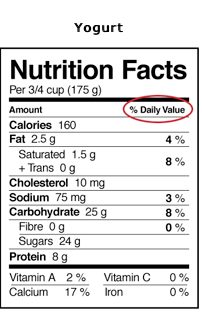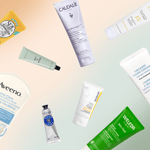Nutrition: Campaign helps us make better use of "% Daily Value"
I tend to check the Nutrition Facts label on foods regularly, sometimes just out of curiosity’How much of my daily

I tend to check the Nutrition Facts label on foods regularly, sometimes just out of curiosity’How much of my daily iron needs is there in a small bowl of arugula (5%) compared with spinach (28%)?’but often to keep an eye on extra calories or sodium that are found in so many convenience and prepared foods. (Which canned tomatoes have the lowest salt content? Look for the no-salt options.)
According to Health Canada research, I’m not alone. About 70 percent of Canadian consumers consider food labels an important source of nutrition information. The research also found that we are not using the % Daily Value numbers found on these labels to compare food products, but we are relying on other indicators, such as brand, price, nutrition claims, ingredient list and nutrient content to make our choices. Those who do compare individual nutrients tend to use the absolute amount (mg, g) rather then the % Daily Value.
So Health Canada, in collaboration with Food & Consumer Products of Canada (FCPC) ‘which represents 34 major food and beverage companies that are participating in this voluntary program’has launched a consumer education campaign aimed at helping Canadians to better make use of the % Daily Value information. The promotional campaign involves a new logo and information about the campaign on food packaging and through in-store displays, as well as a print, online and television advertising campaign that sends consumers to a new section of Health Canada’s website, The % Daily Value, which provides additional information and interactive tools. The site compares two cereal labels as an example of how to make a healthier food choice.
The campaign encourages consumers to use the % Daily Value to determine which foods have a "little" of a particular nutrient, less than 5 percent, compared with those that have a lot, more than 15 percent. Health Canada encourages us to look for higher amounts of nutrients we need, including calcium, iron, fibre and vitamins A and C, and to look for lesser amounts of not-so-healthy compounds such as overall fat, saturated and trans fats, and sodium.
Do you check the Nutrition Facts regularly? And do you pay attention to the % Daily Value?




